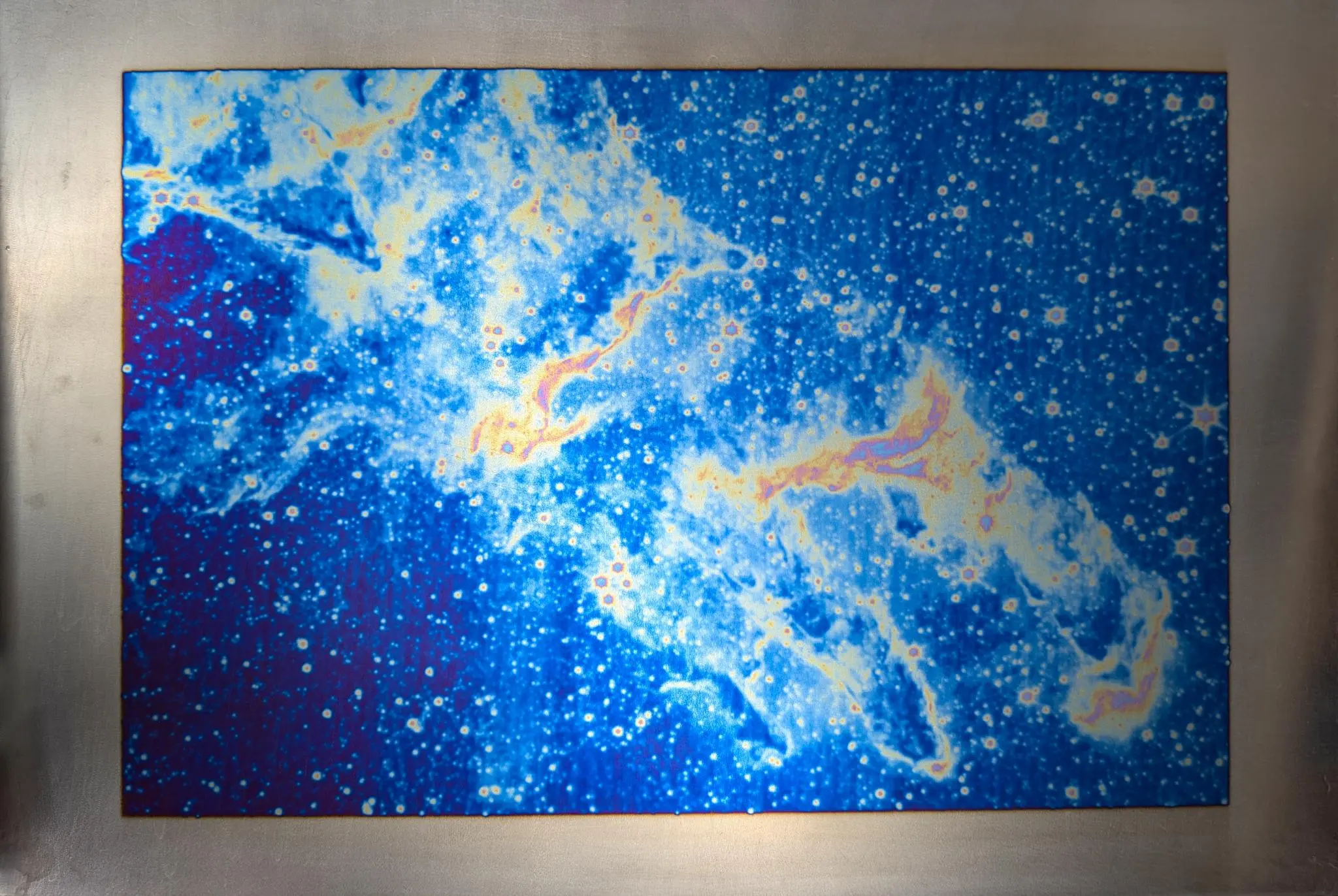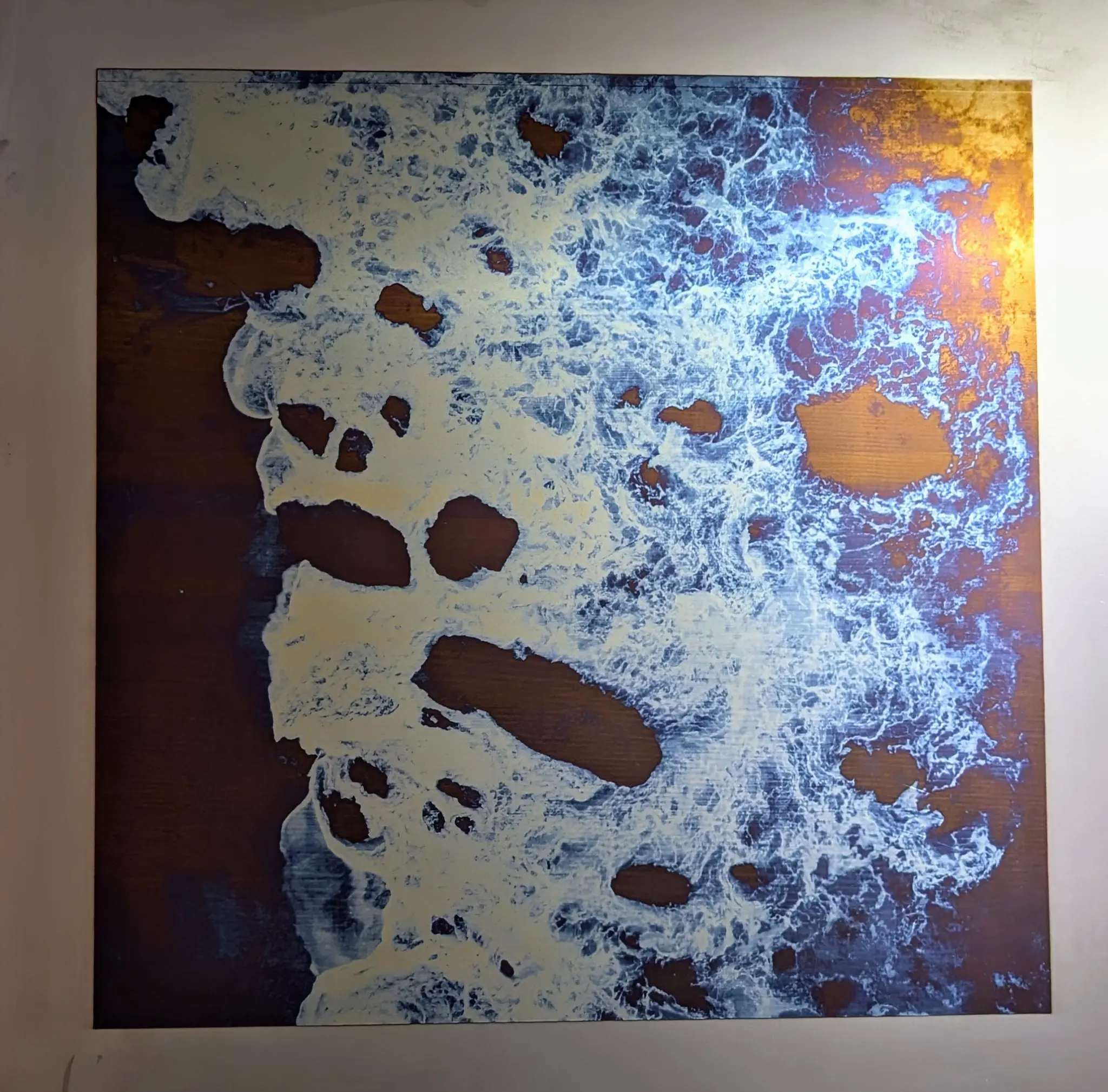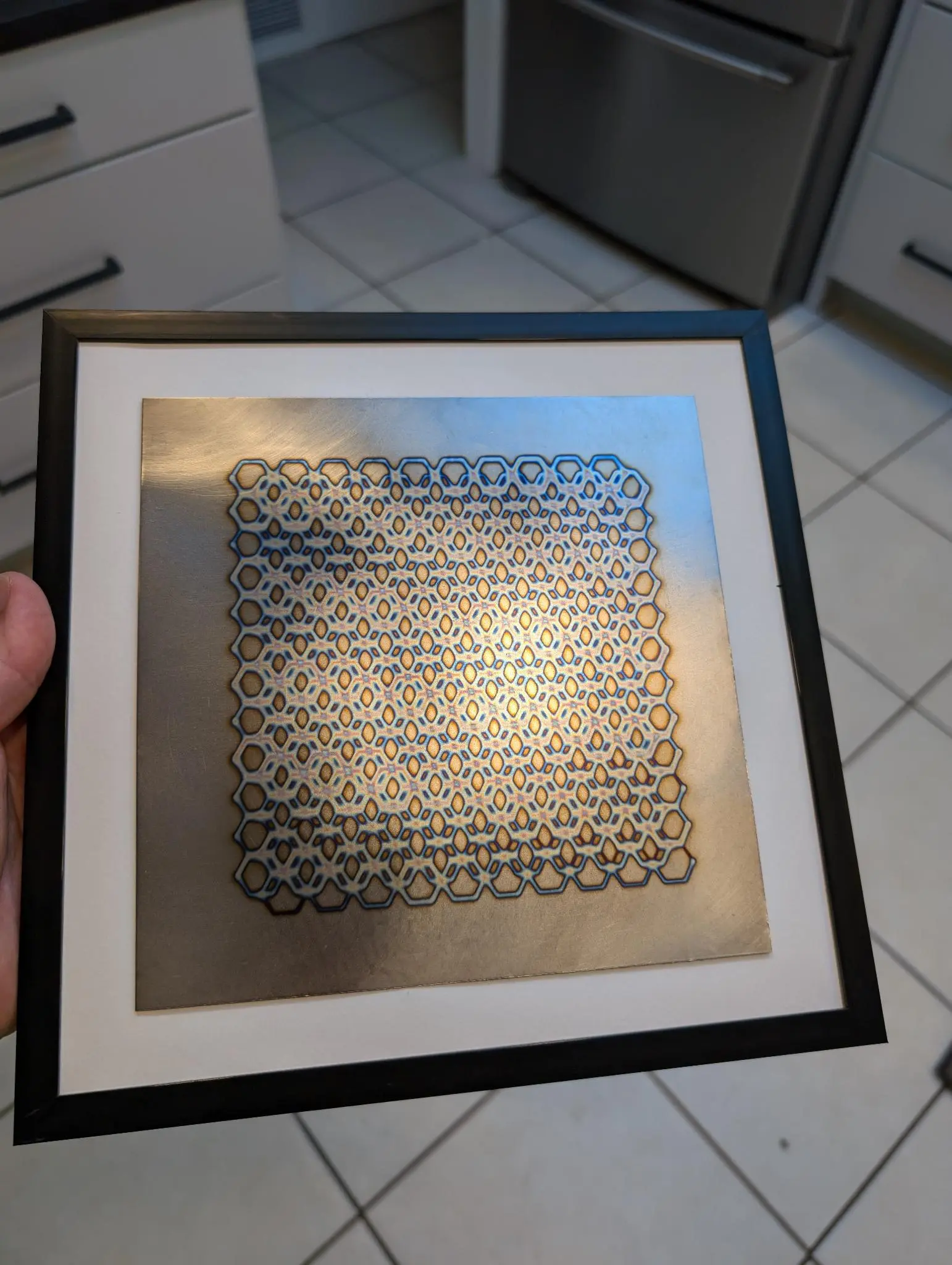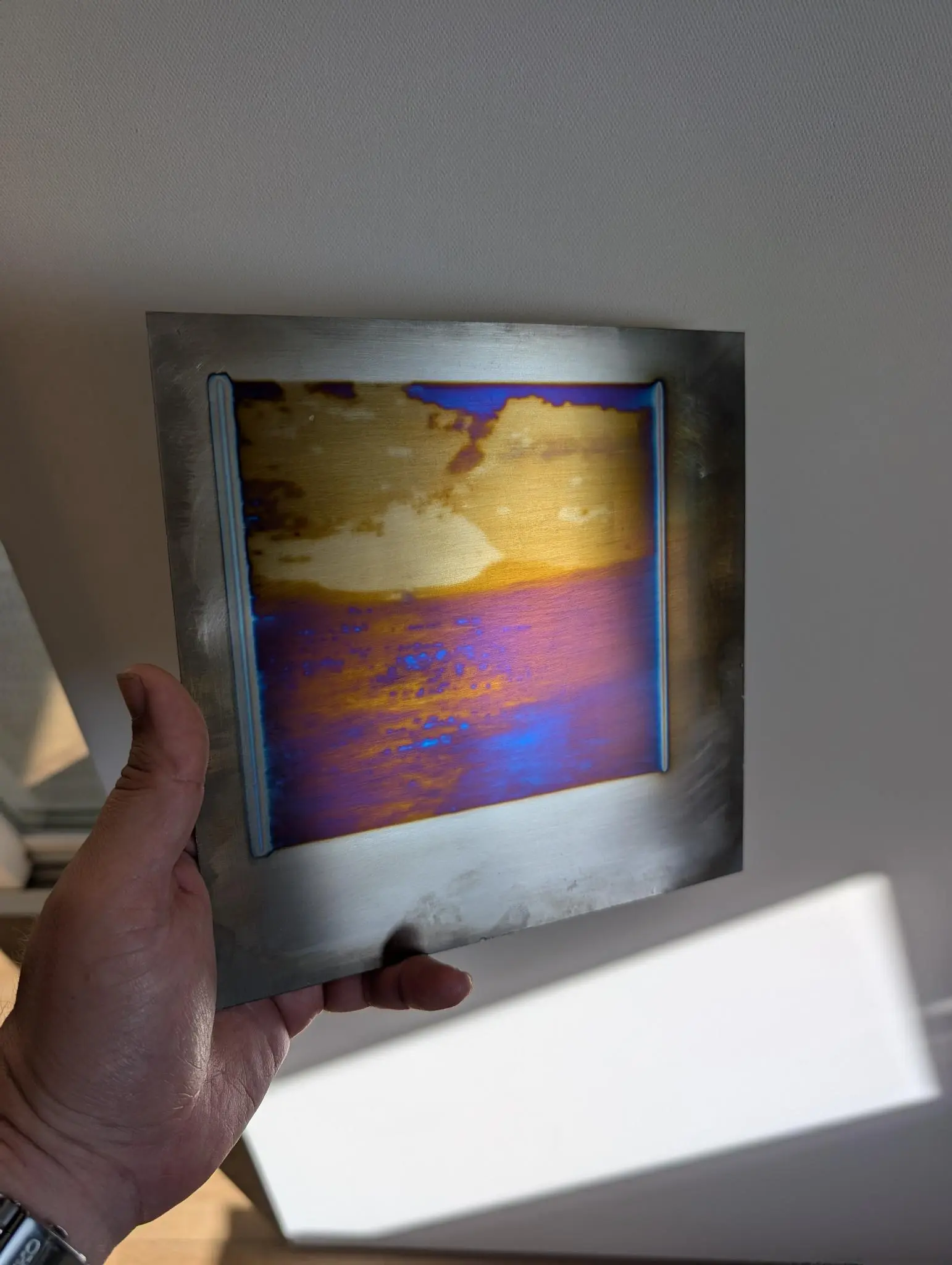I've always wondered why more artists don't use photo paper, is it difficult to work with?
Thank you! For every good print I post here there are 2-3 failed attempts. But the successfully ones are getting cooler and cooler so I'm still stoked!
Thanks! That's exactly it on the color, I think it's a combination of the surface roughness of the titanium plate and tiny variations in the anodization layer itself that give it that look.
Pillars of Creation


Newest titanium print! It's of a region in the Eagle nebula, originally captured by the Hubble telescope. Space seemed like a cool place to explore a little more of the colorspace available in this process. Plate is 12"x18", image is ~9.5"x14".
I'm really happy with how this one came out, the background 'sky' is a gradienting deep iridescent blue, and the nebula itself hits some cool magentas, yellows, and a bluish-green that can't make its mind on what color it wants to be depending on angle and lighting.
Thanks so much! I'm glad you enjoy them, I'll keep posting!
It is, I've got it hanging in a local gallery at $1k US. If that price didn't scare you off I'd be open to negotiating over DM!
It is somewhat closer to traditional photography, but it's using an electrochemical process to create the colors. I'm so sorry I can't tell you more details right now, I'll quote my comment on details below. Once I file a patent on this I'll make a detailed post here on my process. Assuming it even gets granted I intend to make it free for individuals (but not corporations) to use.
So I'm going to just say it's an electrochemical anodization process for now. The detail comes from a new process I've been developing over the last month or so that I'm going to be filing a patent on soon. I'll be happy to share with you all once I've done so, but I the idea of Elon Musk maybe seeing one of these posts and using my process to make a fleet of printed titanium cyber trucks using my process would make me sad.
So I'm going to just say it's an electrochemical anodization process for now. The detail comes from a new process I've been developing over the last month or so that I'm going to be filing a patent on soon. I'll be happy to share with you all once I've done so, but I the idea of Elon Musk maybe seeing one of these posts and using my process to make a fleet of printed titanium cyber trucks using my process would make me sad.
No worries, it's very niche! In titanium means I'm "printing" an anodization (protective oxide layer) on a titanium surface. Titanium and Niobium have a unique property the oxide layer that forms on their surfaces is transparent, and extremely thin (think <1000 nanometers). The colors come from the incoming light constructively and destructively interfering in that oxide layer, so there are no pigments or dyes used in the process.
Waves on the beach in titanium


Apologies for the less than stellar lighting. This was my biggest print so far, just under 18"x 18"! I'm really happy with the details, but printing something this big was definitely a learning experience for me. It took 3 attempts to get this image out, but I learned a lot about tubing management and maintaining chemistry I can think about while I sand down my previous botched attempts :D
The premise is she's a prostitute who found a legal loophole, she doesn't charge for sex she charges for the condom.
When training you'll want way more VRAM than you need to run inference - get a 90 series GPU for the memory.
Damn. I need to go home and think about my life.
Not the spacing, but it affects the width of the lines.
Hexagons is Bestagons


Another anodized titanium piece - this one is playing with line work. The color variation is from varying dwell time, which changes for each hexagon in a rolling pattern, as well as from the interactions between the hexagons.
Exactly - my "pen" is a stainless steel nail in a 3d printed housing.
I make the print by anodizing - I have a pen plotter I converted for this and I use the cathode as my 'pen' to print the image.
Very similar! Both colors are formed by oxide layers on the surface, I think with stainless steel it's a mixture of iron and chrome oxides. In the case of titanium there is only one oxide, TiO2, which is transparent crystal (in thin forms). The TiO2 layer is thin, on the order of hundreds of nanometers so the colors you see are a result of light waves constructively and destructively interacting with the transparent layer of TiO2 on the surface of the titanium sheet.
Titanium Sunset


First post here - I’ve been experimenting with creating art by selectively anodizing titanium. Patterning anodized titanium isn’t new, but this process allows me to create full pictures, which I think is the first time this has ever been done.
This piece started off as a photo of a beach at sunset that I color mapped into the anodized Ti spectrum and printed.
Archive: https://archive.is/UiCQk